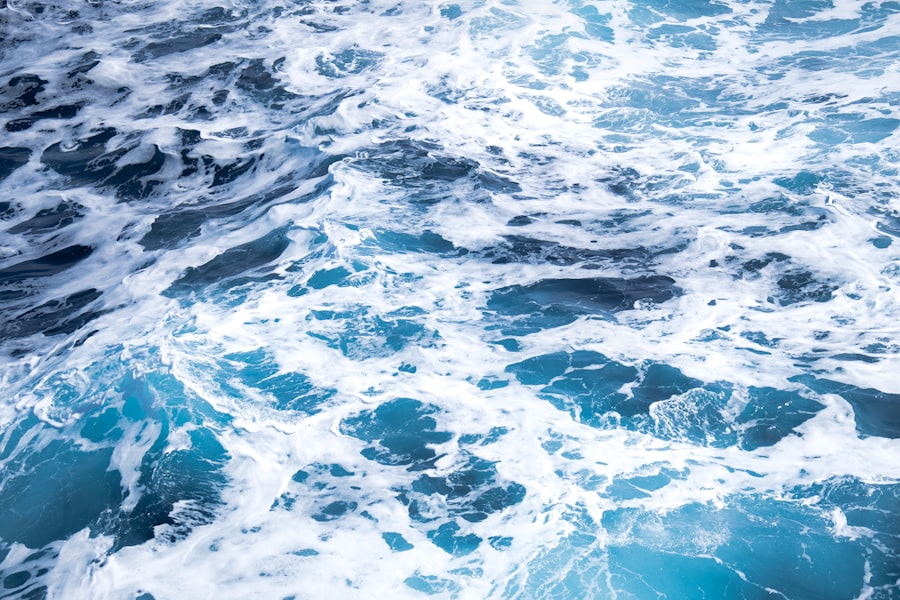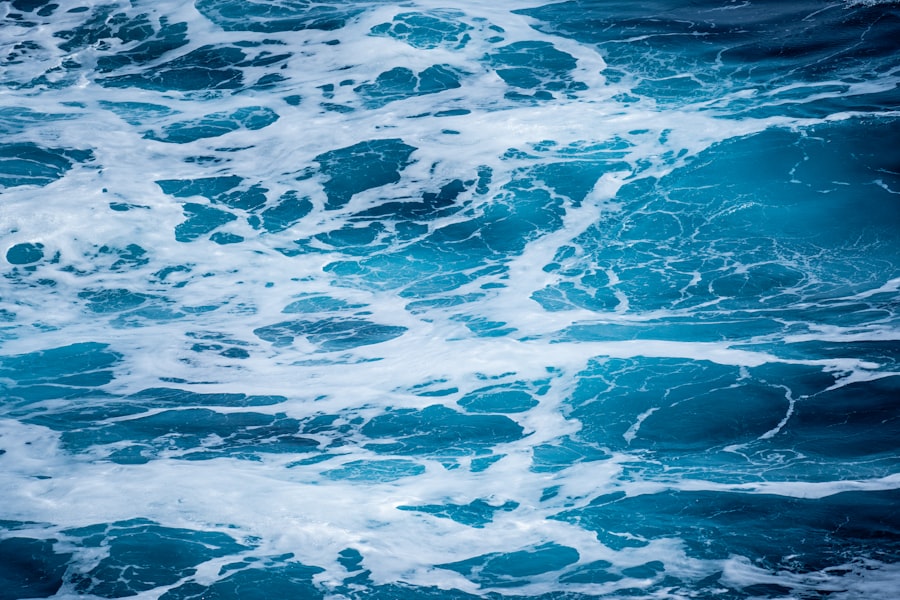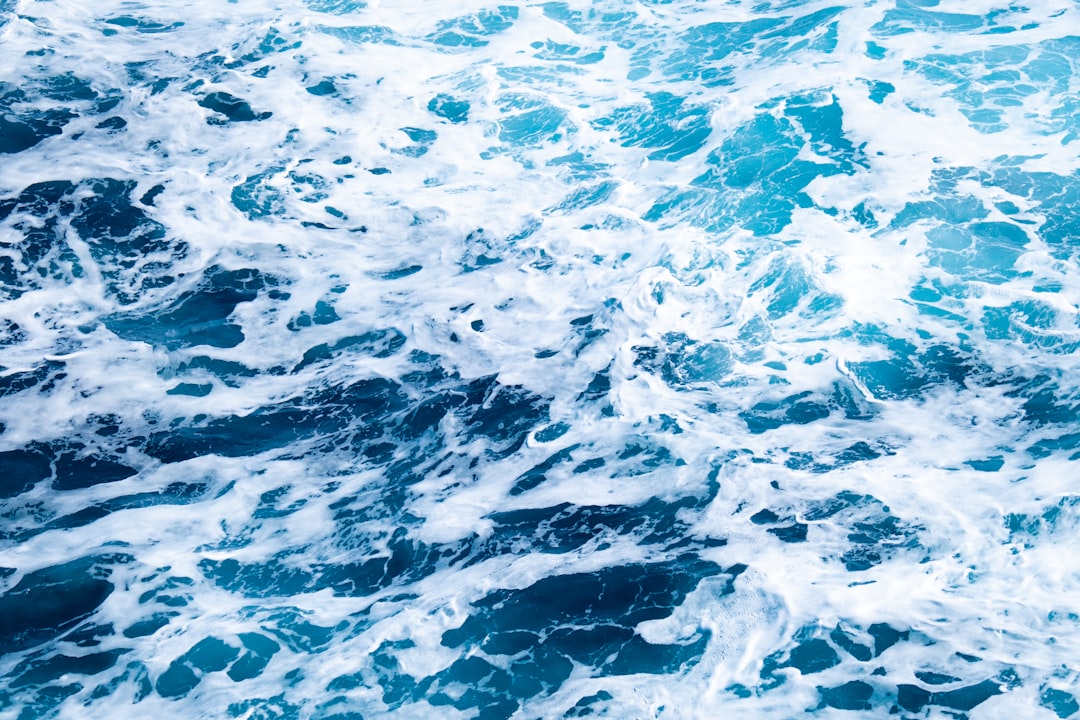The Drake Passage, a body of water that separates South America from Antarctica, is notorious for its unpredictable weather and tumultuous seas. Stretching approximately 600 kilometers, it is often regarded as one of the most perilous maritime routes in the world. The passage is characterized by strong currents, high winds, and massive waves that can reach heights of over 30 feet.
These treacherous conditions are primarily due to the confluence of the Atlantic and Pacific Oceans, which creates a unique and volatile environment. Sailors and navigators have long regarded the Drake Passage with a mix of awe and trepidation, as its waters have claimed numerous vessels throughout history. Navigating the Drake Passage requires not only skill but also a deep understanding of the ocean’s behavior.
The region is infamous for its sudden storms and rapidly changing weather patterns, which can turn a calm sea into a raging tempest in a matter of minutes. This unpredictability has made it a focal point for maritime studies, as researchers seek to understand the complex interactions between ocean currents and atmospheric conditions. For those who dare to traverse these waters, the Drake Passage serves as both a formidable challenge and a testament to human resilience in the face of nature’s fury.
Key Takeaways
- Drake Passage is known for its treacherous waters and unpredictable weather, making it one of the most challenging maritime routes in the world.
- The history of fatal crossings in Drake Passage serves as a reminder of the dangers and risks associated with navigating this route.
- The dangers of crossing Drake Passage include extreme weather conditions, strong winds, and rough seas, which can lead to shipwrecks and maritime disasters.
- The impact on maritime travel includes increased insurance costs, longer travel times, and the need for specialized equipment and experienced crew.
- Strategies for safe passage through Drake Passage include careful route planning, advanced weather forecasting, and the use of modern navigation technology.
History of Fatal Crossings
The history of fatal crossings in the Drake Passage is a somber chronicle of maritime disasters that have unfolded over centuries. From early explorers to modern-day adventurers, many have attempted to navigate these perilous waters, often with tragic results. One of the earliest recorded incidents occurred in the 16th century when Spanish galleons faced catastrophic storms while attempting to reach the shores of South America.
These early voyages were fraught with danger, as sailors battled not only the elements but also the unknowns of uncharted territories. As maritime technology advanced, so too did the attempts to conquer the Drake Passage. However, even with improved navigation tools and vessels designed for rough seas, tragedies continued to plague those who ventured into these waters.
The infamous sinking of the SS Saint Anna in 1914 serves as a stark reminder of the passage’s dangers. Caught in a fierce storm, the ship was overwhelmed by towering waves, leading to the loss of many lives. Such incidents have left an indelible mark on maritime history, highlighting the inherent risks associated with crossing the Drake Passage.
The Dangers of Crossing Drake Passage

Crossing the Drake Passage presents a myriad of dangers that can challenge even the most experienced mariners. One of the primary threats is the unpredictable weather, which can shift from calm to chaotic within moments. Sailors must remain vigilant and prepared for sudden storms that can bring fierce winds and towering waves.
The combination of these elements creates a hazardous environment where vessels can easily become overwhelmed, leading to capsizing or structural failure. In addition to weather-related dangers, navigational challenges also pose significant risks. The waters of the Drake Passage are home to numerous underwater hazards, including submerged rocks and shifting sandbanks that can catch even seasoned navigators off guard.
Furthermore, the presence of icebergs and sea ice during certain seasons adds another layer of complexity to crossing these waters. Mariners must be adept at using radar and other technologies to detect these hazards and adjust their course accordingly, all while contending with the relentless forces of nature.
The Impact on Maritime Travel
| Metrics | Impact |
|---|---|
| Number of Maritime Travelers | Decreased due to travel restrictions and safety concerns |
| Economic Impact | Loss of revenue for cruise lines, shipping companies, and related industries |
| Environmental Impact | Potential reduction in pollution and carbon emissions from decreased maritime travel |
| Employment Impact | Job losses in the maritime industry and related sectors |
The treacherous nature of the Drake Passage has had profound implications for maritime travel and trade routes. For centuries, this passage has served as a critical link between the Atlantic and Pacific Oceans, facilitating trade and exploration. However, its dangers have also led to increased caution among shipping companies and navigators.
Many vessels now opt for longer routes that avoid the passage altogether, resulting in longer transit times and higher costs for goods transported between continents. Moreover, the risks associated with crossing the Drake Passage have spurred advancements in maritime safety protocols and technologies. Shipping companies have invested in more robust vessels equipped with state-of-the-art navigation systems and weather forecasting tools.
These innovations aim to enhance safety and minimize the likelihood of accidents in these perilous waters. As a result, while the Drake Passage remains a formidable challenge, it has also become a catalyst for progress in maritime travel.
Strategies for Safe Passage
To navigate the treacherous waters of the Drake Passage safely, mariners employ various strategies that combine experience, technology, and preparation. One key approach is meticulous planning before embarking on a journey through these waters. This includes thorough research on weather patterns, ocean currents, and potential hazards along the route.
By understanding these factors, sailors can make informed decisions about when to set sail and how to adjust their course during transit.
Modern vessels are equipped with advanced radar systems that provide critical information about weather conditions and nearby obstacles.
Sailors often rely on satellite communication to receive updates from meteorological services, allowing them to adapt their navigation strategies as needed. Furthermore, maintaining open lines of communication with other vessels in the area can provide valuable insights into changing conditions and potential dangers ahead.
The Role of Climate and Weather

The climate and weather patterns in the Drake Passage play a pivotal role in shaping its notorious reputation. The region experiences extreme variations in temperature and atmospheric pressure due to its geographical location at the convergence of two major ocean currents. These fluctuations can lead to rapid changes in weather conditions, making it imperative for sailors to remain vigilant at all times.
Seasonal variations also significantly impact crossing conditions in the Drake Passage.
Understanding these seasonal dynamics is crucial for those planning to traverse this challenging route, as it allows them to anticipate potential risks and prepare accordingly.
Search and Rescue Efforts
Given the inherent dangers associated with crossing the Drake Passage, search and rescue efforts play a vital role in ensuring the safety of mariners who find themselves in distress. Various organizations, including coast guards and international maritime agencies, are tasked with monitoring these waters and responding to emergencies as they arise. Their efforts are often coordinated through advanced communication systems that allow for rapid deployment of rescue teams when needed.
Search and rescue operations in the Drake Passage are particularly challenging due to its remote location and harsh conditions. Rescuers must contend with rough seas and unpredictable weather while attempting to locate distressed vessels or individuals in need of assistance. Despite these challenges, advancements in technology have improved response times and effectiveness in search operations.
Drones equipped with thermal imaging cameras and satellite tracking systems are increasingly being utilized to enhance search efforts in this treacherous region.
Survivors’ Stories
The stories of survivors who have crossed the Drake Passage often serve as powerful testaments to human resilience in the face of adversity. Many recount harrowing experiences that highlight both the dangers of these waters and their own determination to survive against all odds. One such story involves a group of sailors whose vessel was caught in a violent storm while navigating through the passage.
Despite being battered by waves and facing life-threatening conditions, they managed to work together to stabilize their ship and ultimately reach safety. Another survivor’s account tells of an unexpected encounter with an iceberg that nearly led to disaster. After narrowly avoiding collision, this sailor described how quick thinking and teamwork were essential in averting catastrophe.
These narratives not only shed light on the perils associated with crossing the Drake Passage but also emphasize the importance of camaraderie among those who brave its waters.
The Future of Crossing Drake Passage
As maritime technology continues to evolve, so too does the future of crossing the Drake Passage. Innovations in vessel design, navigation systems, and weather forecasting are likely to enhance safety for those who venture into these treacherous waters. Additionally, ongoing research into climate change may provide valuable insights into how shifting weather patterns could impact future crossings.
Moreover, increased interest in Antarctic exploration and tourism may lead to more vessels traversing the Drake Passage in coming years. This surge could prompt further advancements in safety protocols and regulations aimed at protecting both mariners and the fragile ecosystems surrounding Antarctica. As humanity’s desire to explore new frontiers persists, navigating these perilous waters will remain an enduring challenge that demands respect for nature’s power.
Legal and Ethical Considerations
The complexities surrounding legal and ethical considerations in crossing the Drake Passage cannot be overlooked. As international waters, various countries have jurisdiction over different aspects of maritime law within this region. This raises questions about accountability when accidents occur or environmental regulations are violated during crossings.
Furthermore, ethical considerations arise regarding tourism activities in Antarctica facilitated by crossings through the Drake Passage. The potential impact on fragile ecosystems must be weighed against economic benefits derived from increased tourism. Striking a balance between exploration and conservation is essential for ensuring that future generations can continue to experience this remarkable region without compromising its integrity.
Remembering the Lives Lost
In reflecting on the treacherous nature of crossing the Drake Passage, it is crucial to remember those who have lost their lives while navigating its perilous waters. Each tragedy serves as a reminder of both human vulnerability and resilience against nature’s might. Memorials dedicated to victims stand as poignant tributes honoring their courage while also emphasizing the importance of safety measures for future mariners.
As stories of loss continue to resonate within maritime communities worldwide, they inspire ongoing efforts toward improving safety protocols and fostering greater awareness about risks associated with crossing this formidable passage. By remembering those who came before them—those who braved these waters—the hope remains that future generations will navigate them with greater respect for both their beauty and their dangers.
The Drake Passage, known for its treacherous waters, has been a significant route for explorers and adventurers alike. Unfortunately, its perilous nature has also led to numerous fatalities over the years. For a detailed exploration of the challenges faced by those who have attempted to cross this formidable stretch of ocean, you can read a related article on the topic by visiting this page. This article delves into the history and the dangers associated with the Drake Passage, providing insights into why it remains one of the most feared maritime routes in the world.
WATCH NOW! Drake Passage: Earth’s Deadliest Waters Revealed
FAQs
What is the Drake Passage?
The Drake Passage is the body of water between the southern tip of South America and the northern tip of the Antarctic Peninsula. It is known for its rough seas and challenging sailing conditions.
How many people have died crossing the Drake Passage?
There is no specific data on the number of people who have died crossing the Drake Passage. The passage is known for its treacherous conditions, but there is no comprehensive record of fatalities.
What are the main dangers of crossing the Drake Passage?
The main dangers of crossing the Drake Passage include rough seas, strong winds, and extreme weather conditions. These factors can make sailing through the passage challenging and potentially hazardous.
Are there any safety measures in place for crossing the Drake Passage?
Experienced captains and crew members, as well as modern navigation and communication technology, are the primary safety measures in place for crossing the Drake Passage. Vessels that traverse the passage are typically well-equipped to handle the challenging conditions.
